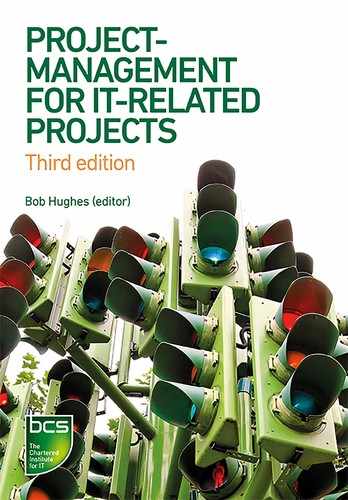LIST OF FIGURES AND TABLES
Figure 1.1 The waterfall model
Figure 1.2 An incremental model
Figure 2.1 A product breakdown structure diagram
Figure 2.2 A product flow diagram
Figure 2.3 Activity on arrow network
Figure 2.4 Activity on node network
Figure 2.5 A network activity fragment with activity durations
Figure 2.6 Earliest start (ES) and finish (EF) days
Figure 2.7 Latest start (LS) and finish (LF) dates
Figure 2.8 Layout of an activity box
Figure 2.9 Activity box for ‘do C’
Figure 2.11 Water Holiday Company project: ‘G. Write software’ activity
Figure 2.12 A resource histogram for each resource type
Figure 3.1 A Gantt chart that has been updated with actual progress
Figure 3.2 A cumulative resource chart
Figure 3.4 A Gantt chart that has been updated with actual progress up to week
Figure 5.1 A simplified V model
Figure 7.1 Risk management cycle
Figure 7.2 Probability impact grid
Table 1.1 Activities in SDLCs for Build versus Adapt projects
Table 2.1 Numbers of each resource type needed in each week
Table 6.1 Example of COSMIC function point counting
Table 6.2 Relationship between top-down/bottom-up and the three main estimating approaches
Table 7.1 Mapping qualitative and quantitative assessments of risk probability
Table 7.2 Mapping qualitative and quantitative assessments of cost impact
Table 7.3 Mapping qualitative and quantitative assessments of scope impact
Table 7.4 Mapping qualitative and quantitative assessments of time impact
Table 8.1 Example of a matrix organisation
Table 8.2 Examples of same/different time/place communication
